Scotland is one of the most naturally beautiful places in the world and it’s also famous for beautiful Scottish Flowers – think vast, sweeping moors covered in a thick coat of purple heather, grassy sea shores rich with wildflowers, and woodlands sprouting bluebells and grape hyacinths as soon as the seasons begin to change from winter to spring.
Much of Scotland’s beauty comes from its incredible, hardy but still delicate looking fauna. If you’re a fan of Scotland, or just a lover of gardening, you will have to read on to learn about beautiful Scottish flowers, to give your garden a great Caledonian flair.
1. The Thistle
The thistle is the most iconic of the Scottish flowers and is actually their national flower, so its iconography can be found adorning flags, mugs, signs, and even official letters all over the country.
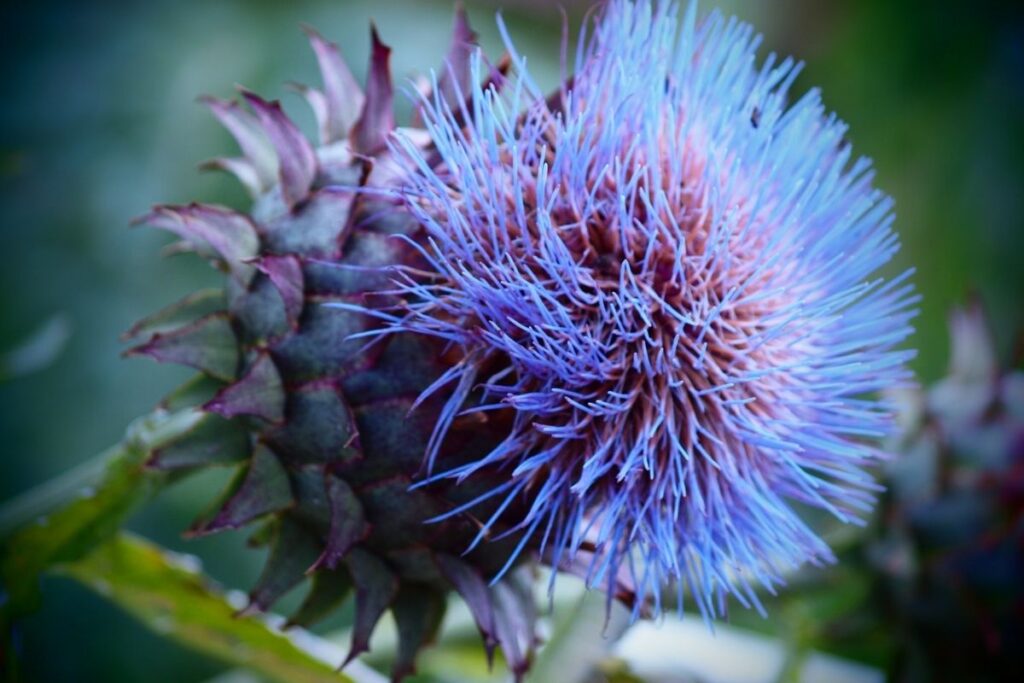
It is not totally sure how the thistle became such an important part of Scottish culture, but there is a legend that it is because a sleeping party of Scot warriors were saved from an invasion of Norse soldiers when one of the invading infantrymen stepped on a spiky plant, and his resulting cry of pain woke the Scots up.
There is some uncertainty over what variety of thistle is that the national flower should be, as there are a few different species of thistle that are found growing in Scottish soil.
You can choose your favorite out of options such as the cotton thistle, the spear thistle, the musk thistle, the melancholy thistle, or Our Lady’s.
2. Heather
Again, this is one of the most iconic Scottish plants, and usually springs to mind when you think about the nature of the highlands. There are two types that are most commonly found – calluna (also known as common heather or ling) and Erica (which is sometimes called ‘bell heather’).

Common heather us find widespread across a myriad of landscapes in Scotland, and is a very hardy plant, which is able to cope with the poor acidic Highland soil, and the intense weather of the region.
This hardiness was prized, particularly in the harsh highlands of Scotland. In olden times, highlanders could make rope from the tough stems, as well as other household items, such as brushes, bedding, insulation, clothes dye and ale (though a few of these techniques have been lost to time).
During rationing, which was enforced by the austerity of World War Two, shortages in wood created an industry around heather, using it for things such as floor tiles. These were made by compressing heather stems into a thick tile.
Through history, heather has also had a medicinal role, as it was thought have restorative powers (and today it is still prescribed for the treatment of arthritis and infections of the urinary system.
The flowers of the plant are stunning, especially when seen together in large groups, and can come in a range of colors, from the purest whites, to the darkest, deepest purple.
3. The Scots Bluebells
The Scots bluebell, another well known Scottish flower, is different to the standard bluebell (who’s Latin name is Hyacinthoides non scripta), which is usually found carpeting the floors of forests and woodlands in early spring.
Instead, this Scottish flower is actually campanula rotundifolia (which is also sometimes called harebells across the UK). They are generally found in heath land and the verges by road.
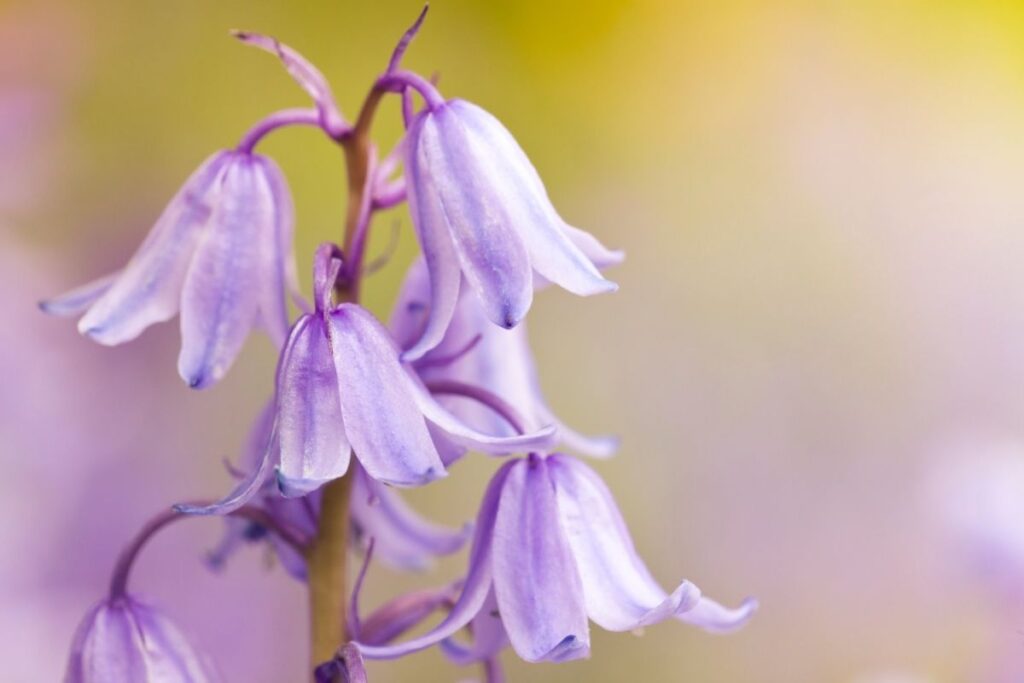
They come in a few different colors, from periwinkle blue, to lavender and lilac, to bring, papery white, but regardless of color, they add springtime joy to both natural grounds, and your garden.
4. The Mountain Aven
Mountain avens (Latin name Dryas octopetala) is a beautiful shrub that is very distinctively Scottish. It can be recognized by its leaves, which resemble miniaturized versions of oak leaves.
The flower, like the Italian sunflower, follows the sun. However, it does have a different appearance to sunflower, with eight white petals, and a bright yellow center (which is a little bit reminiscent of a sunny side up fried egg).
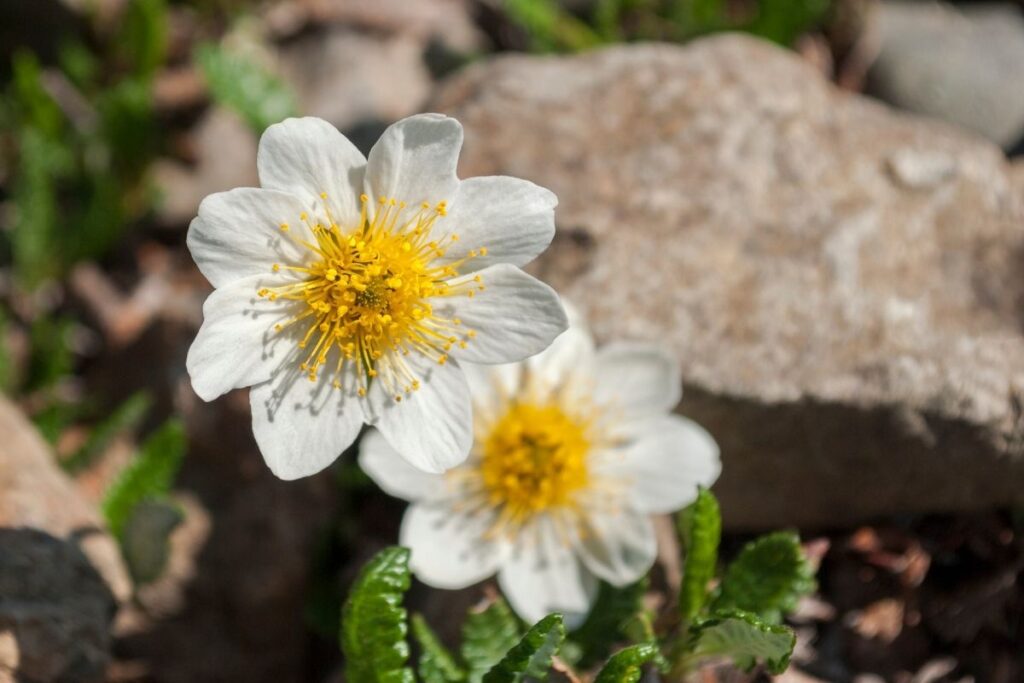
It doesn’t grow in the peaty acidic soil that is found typically throughout Scotland, but rather it is found growing atop limestone, which is high up in the mountains (hence the name).
It can sometimes be found absurdly high in the mountains. If you do spot this plant growing, then you know that you are standing on top of limestone rock.
5. The Moss Campion
This is a pink starry-shaped flower that has foliage that also looks like moss (hence the mossy name). It is growing wild across the uplands of Scotland, including the popular (and stunningly beautiful) Cairngorms. And is often seen brightening up a long day’s hike or hill walk.
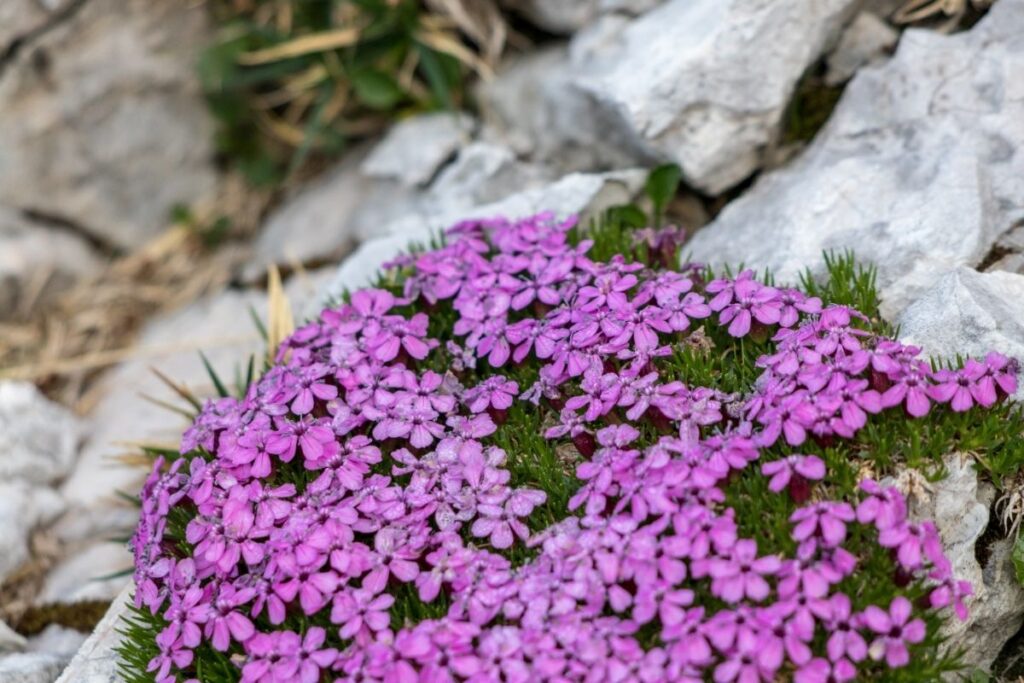
6. The Dwarf Cornel
The dwarf cornel plant (with the Latin name Cornus suesica) grows in poor quality, acidic soil. Making it a specialist at the blanket covering boggy regions (of which there are many in Scotland).
One can find it frequently in the naturally wild Scottish Highlands. Particularly at Glen Clova (one of the five Angus glens filled with verdant pine trees, snow-capped mountains, and other lush flora and fauna). However, it doesn’t grow much further south than this.
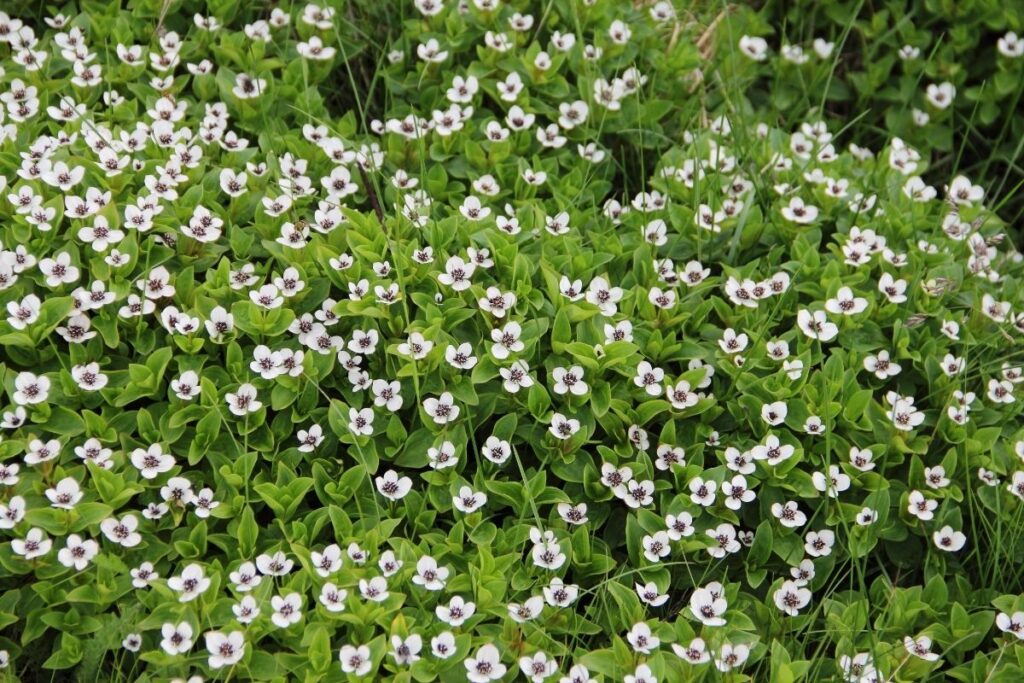
The ideal growing location and conditions from the dwarf cornel plant is the high moors, that have peaty grounds. It typically grows amongst other low growing shrubs.
An interesting botanical fact about the dwarf cornel plant is that the white parts of the flower are not actually petals, despite their looks. Instead, they are modified leaves, known to botanists, horticulturalists and gardening enthusiasts as bracts.
7. The Bog Myrtle
The bog myrtle plant (sometimes also called the sweet gale) gives off a refreshing citrussy scent when crushed. And it repels midges. This fact can make it a hiker or camper’s best friend. When they are exploring the Scottish countryside in summer when it is rampant with blood-sucking midges.
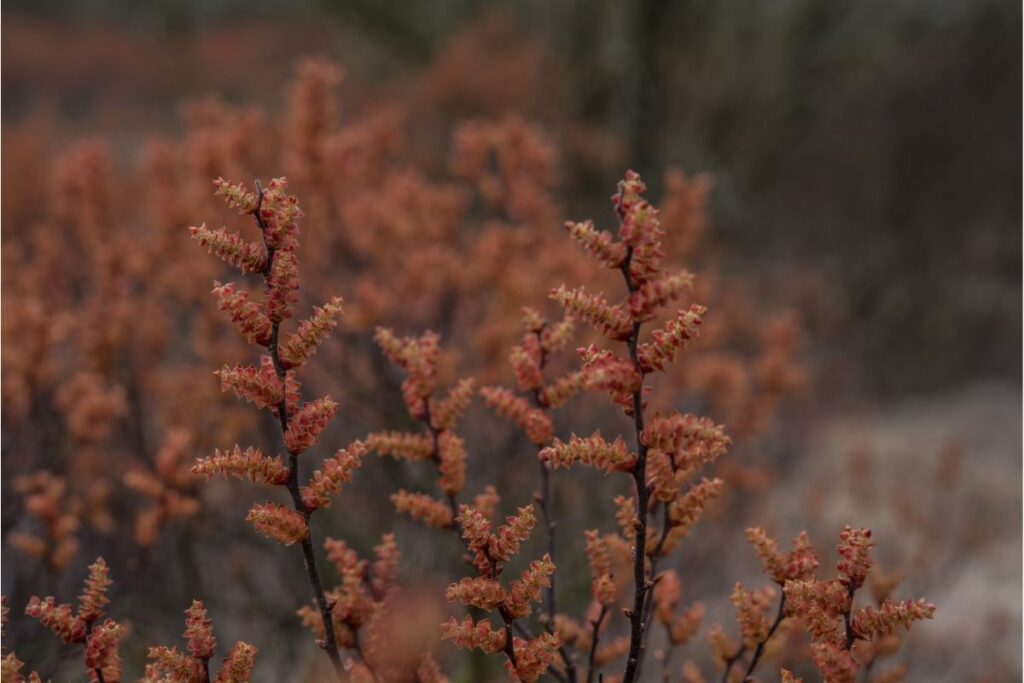
Unlike a lot of the other citrus-scented plants. It does not require Mediterranean conditions and oodles of bright sunshine to survive and thrive.
The plant is common throughout Scotland’s peat bogs, and many herbalists consider it to be one of Scotland’s most useful natural plants. Drawing similarities between it and the tea tree. Many a soap company or toiletries manufacturer has incorporated it into their recipes for a little citrussy Scottish flair.
8. The Scottish Primrose
The Scottish Primrose (also sometimes known as the primula Scotia), this diddly plant has dark, plummy purple-colored overgrazing flowers, and vivid yellow centers. It grows mainly in moist 9 but is still well drained) grazed grassland.
It only grows to around 4 cm tall in total, it can be susceptible to overgrazing and under grazing. So it is quite scarce, despite being native to Scotland. Furthermore, one can only find it in the counties of Caithness, Sutherland, and Orkney. With the flowers spottable in May, June, and July.
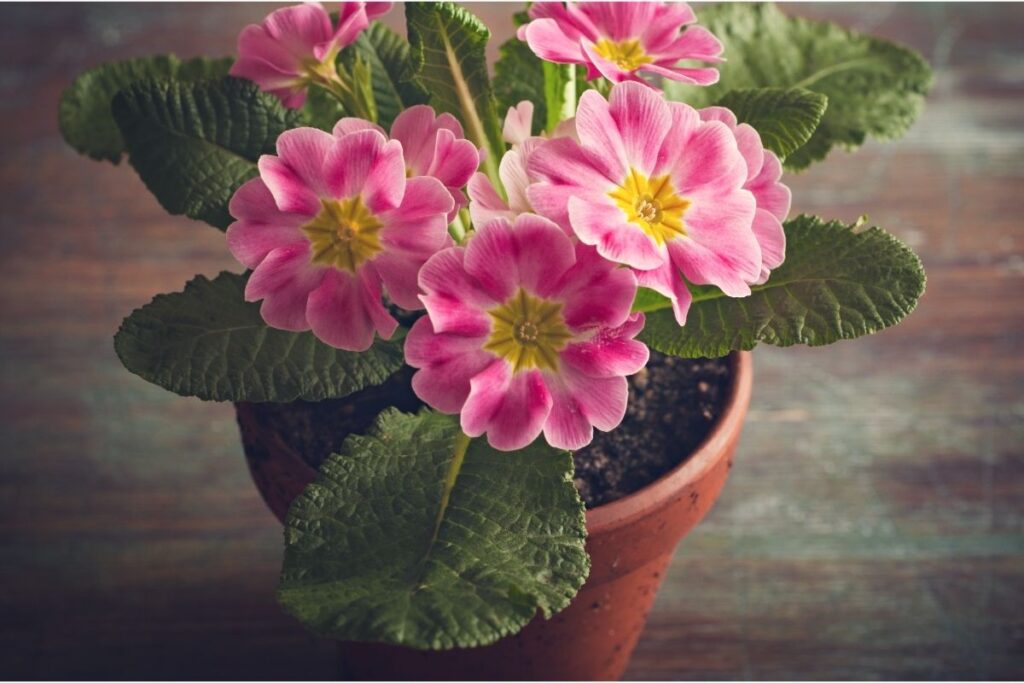
9. The Wood Anemone
This is one of the first flowers to appear in Scotland in the springtime. Usually, one can find it in quite heavily wooded areas – explaining its name.
They can come in both white and pink colors and people sometimes call them the windflower. As the Ancient Greeks believed that the flower would open up as the wind blew across it.
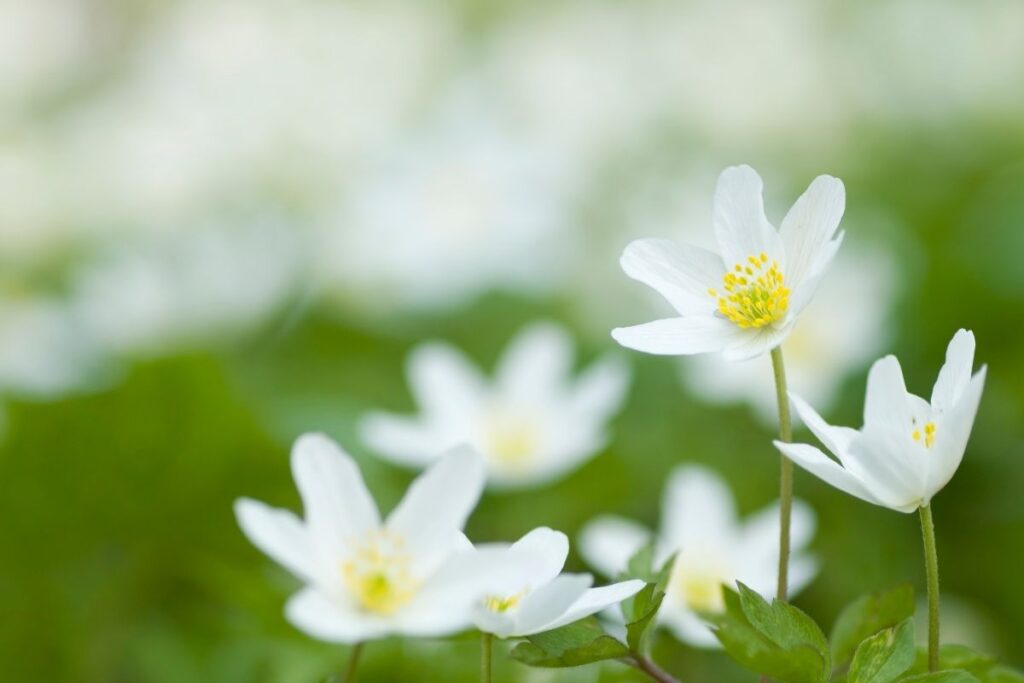
10. The Cuckoo Flower
This flower (sometimes also known as the Lady’s Smock flower) is another one that blooms in Scottish springtime.
It has come to be known as the cuckoo flower. Because when it blooms, one can also see and hear the cuckoo bird frequently at the same time. And the Lady’s Smock, because of its skirt-like appearance.
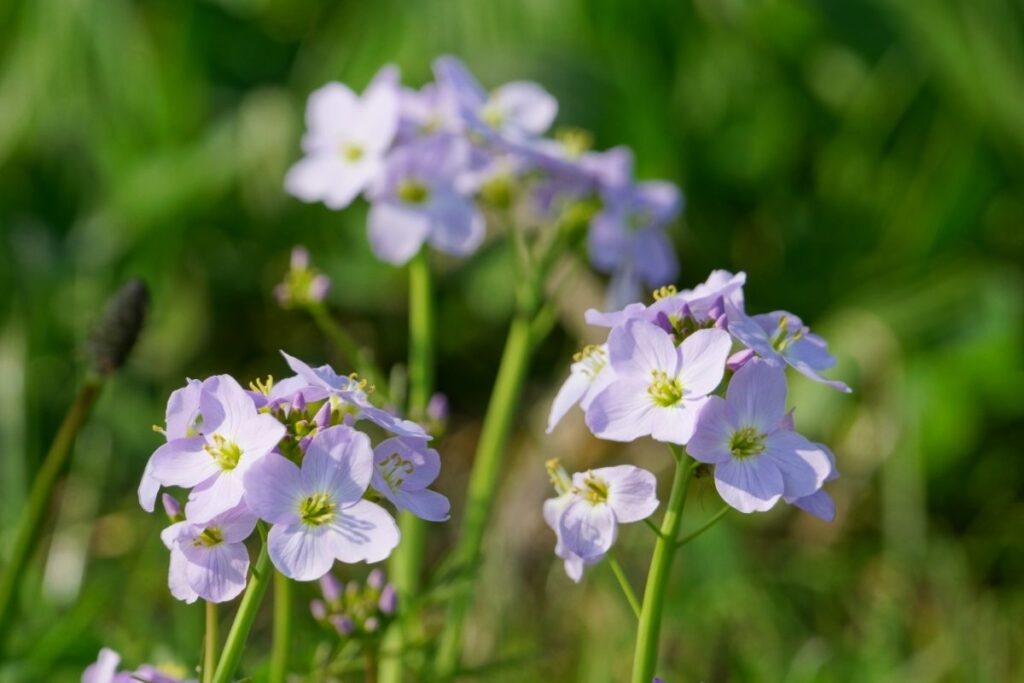
It has a delicate lilac color, and tends to be found in damp meadows, or along the verges of roads. They are also akin with a butterfly that has orange wing tips, as they are often seen together. And they are a favorite of the pollinator.
11. The Bitter Stonecrop
This is the Scottish cousin of the English Stonecrop. It is a robust dwarf succulent, that is very hardy. It can even survive up to six months without any water. This is because of its oval-shaped, bright green fleshy leaves, which are great stores of water for the plant.
It is a creeping, ground-level plant, that is found in dense mats in arid environments. Such as dunes, dry grassland, roof shingle, and walls in the south and east regions of the East of Scotland.
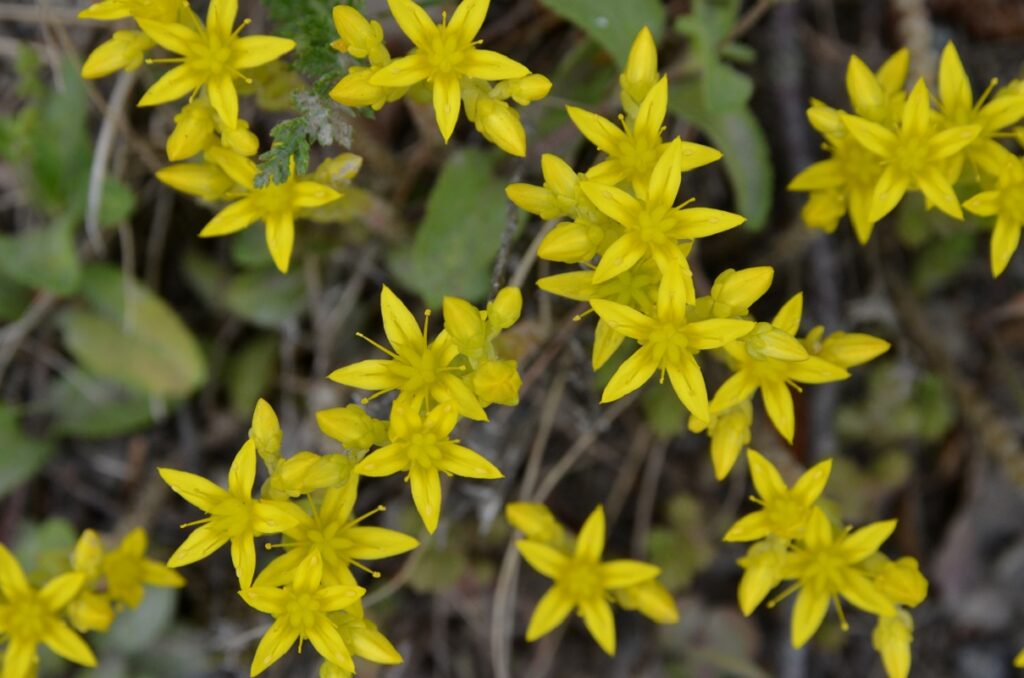
The flowers themselves are bright yellow, around 1.5 to 2 cm, in diameter, and have five petals, forming a star shaped flower.
12. The Bog Bean
The bog bean is the only aquatic plant that we will feature in this list. It is happiest when submerged underwater. And will form in floating mats of foliage across acidic ponds and shallow Scottish lochs. This is usually found in the upland creeks and bogs of West Scotland.
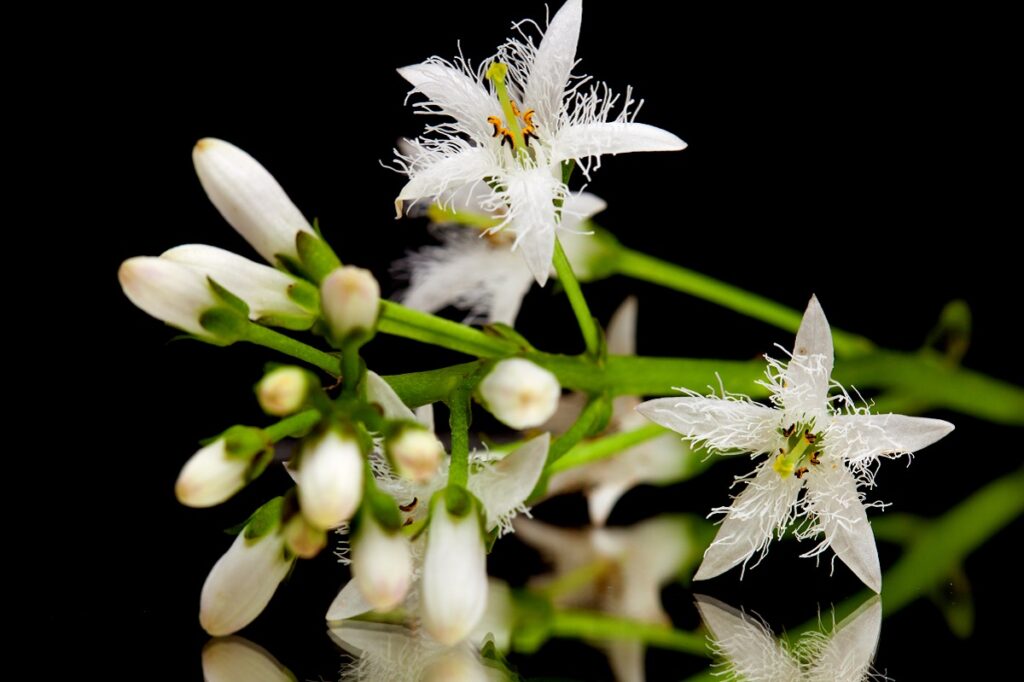
It can sometimes be confused with standard common clover, because of its arrangements of three leaves. The flower will appear on the very top of the stem, in a spike of white petals. The plant gets it name from its bean shaped seeds, but we don’t suggest that you eat them.
Final Thoughts
As you can see, Scotland plays host to a huge variety of native flora – varying from the aquatic bog bean flower, to the symbolic thistle, and the tall mountain aven. If you are planning on taking a trip to Scotland, keep your eyes peeled for all of these stunning native flowers.







